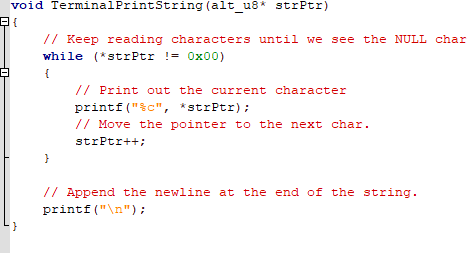Answered step by step
Verified Expert Solution
Question
1 Approved Answer
Could someone explain what I should do in this C function? (a) Delete the #include statement. (b) Rewrite the C function TerminalPrint() so that the


Could someone explain what I should do in this C function?
(a) Delete the #includeStep by Step Solution
There are 3 Steps involved in it
Step: 1

Get Instant Access to Expert-Tailored Solutions
See step-by-step solutions with expert insights and AI powered tools for academic success
Step: 2

Step: 3

Ace Your Homework with AI
Get the answers you need in no time with our AI-driven, step-by-step assistance
Get Started


